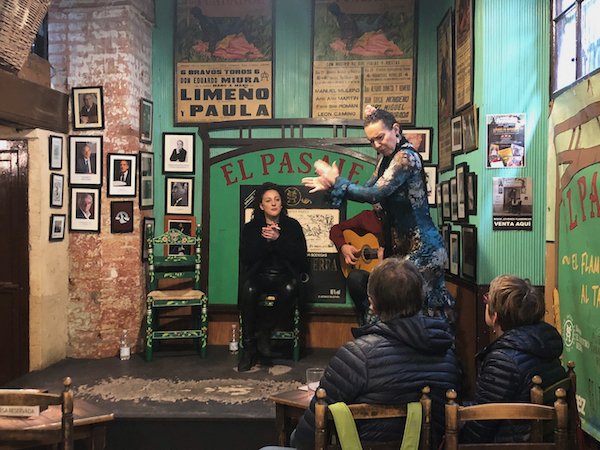Sherry wine: what it is and how to drink it
If you’re talking about Andalusia, it won’t be long before the conversation turns to Sherry. Sherry is a type of fortified wine produced exclusively in the Andalusian region of Jerez. You can drink it on its own or use it in a cocktail, but Sherry really works best when paired with food.
The Jerez-Xérès-Sherry name
Sherry is known as Vino de Jerez in Spanish. It’s an exclusive drink because the name applies to specific types of wine produced in the Sherry triangle: land between the three towns of Jerez de la Frontera, Sanlúcar de Barrameda and El Puerto de Santa María. It’s a very small zone for a drink that is known around the world!
Sherry wines produced in the Sherry triangle according to specific processes are protected by Denomination of Origin, which means only these wines can be called ‘Sherry’. Think of it like a collective brand name or label. Not all wines produced in the area are necessarily Sherry, only those that are produced according to specific traditional processes. The name is like a guarantee and it’s regulated by the Consejo Regulador which governs the regulations under which Sherry is produced.
The difference between wine and Sherry wine
So apart from the fact it comes from Jerez, what exactly makes Sherry different from any other wine? It comes back to those specific processes that are followed to create Sherry, which is where we need to get a little technical…
Sherry is a fortified wine
When you take a wine and add more alcohol, it becomes a ‘fortified wine’. Generally red or white table wines have an alcohol volume of typically 12% to 14%. Sherry is made by starting with a wine and adding alcohol from fermented and distilled grape must. This raises the alcohol volume to anywhere between 15% and 22%. The degree to which the wine is fortified is dictated by what type of Sherry the wine is destined to become.
Is there more than one type of Sherry?
Yes!
There are a range of different Sherry styles. Perhaps somebody’s told you that they don’t like Sherry because it’s too sweet? In fact the majority of Sherry wine is dry! There are two naturally sweet Sherry wines and then sweet Sherries that are created through blending.
Let’s take a quick look at the different styles…
Fino
Fino is a dry white wine. It’s made from palomino grapes and aged in the barrel under a layer of yeast that forms on the liquid’s surface and imparts specific characteristics to the wine. The resulting Sherry has a sharp, fresh taste with almond aromas. If you are used to drinking white wines but haven’t tried Sherry, Fino is not at all comparable. It can be subtle, it can be smooth, but it is powerful.
Manzanilla
Manzanilla is produced exclusively in Sanlúcar de Barrameda and is protected by its own Denomination of Origin. Like Fino it is a dry white wine made from palomino grapes and aged under a layer of yeast, which both protects the wine from oxidation and gives it its unique characteristics. The seaside location of Sanlúcar de Barrameda influences the formation of the yeast on the wine’s surface giving Manzanilla its unqiue taste and maritime character.
Amontillado
Also made from palomino grapes, Amontillado starts out by ageing under a layer of yeast just like Fino and Manzanilla. However a second stage of ageing takes place in which the yeast disappears and the wine is exposed to oxygen, giving the wine a deeper golden-amber colour. The two stages of ageing make Amontillado a complex wine with nutty aromas.
Oloroso
While Oloroso is also made from palomino grapes, it doesn’t start life the same way as a Manzanilla or Fino. This wine is directly fortified to 17% alcohol volume, which prevents the development of a layer of yeast and exposes the wine directly to oxidative ageing. This ageing process gives the wine a deep stained timber colour with aromas of walnuts, wood and tobacco.
Palo Cortado
Palo Cortado is a wine selected for two ageing processes. It is fortified initially to 15% alcohol volume. If the wine maker finds the wine has suitable characteristics, it will be fortified again to 17% forcing any yeast that has developed to disappear and exposing the wine to oxidative ageing. It’s a more elusive wine and can be described as having the aromas of an Amontillado combined with the mouthfeel and taste of an Oloroso.
Moscatel
Moscatel is a sweet Sherry made from Moscatel grapes that are either fresh or sun-dried. It’s dark in colour and is dense and floral with a high concentration of sugar.
Pedro Ximénez
Pedro Ximénez is made from the grape of the same name, which is sun-dried to produce an intensely sweet wine. It’s dark reminiscent of molasses, dried fruit and sticky jam.
Pale Cream, Medium and Cream
These wines are created by starting with a dry Sherry wine. In the case of Pale Cream it is blended with concentrated rectified must, which gives the wine a bit of sweetness while retaining the look of a dry white wine. Medium is created by blending either concentrated rectified must or a sweet Sherry. Finally Cream is a blend of specifically Oloroso and Pedro Ximénez and is sometimes known as Sweet Oloroso.
One of the key differences between the different types of Sherry is whether they are aged under a layer of yeast or exposed to oxygen (or both). What all Sherry wines have in common is the traditional system in which they age: the Solera system.
The Solera system for ageing Sherry
It’s the quintessential photo of a Sherry bodega: barrels stacked upon barrels. This isn’t just a way of storing wine, it’s an organised system for ageing that allows winemakers to blend wines from different vintages. The idea of blending wines from different years is not unique, but it is a defining part of Sherry. It’s distinct from most table wines on the market which are from single vintages and are sold with the year on the bottle’s label.
How does the Solera system work exactly? New wines are placed in barrels on the top tier. Sherry is bottled from barrels on the lowest tier, closest to the floor. Those lowest barrels are then topped up with Sherry from the barrels in the tier above them, which are in turn replenished with wines from the next tier up and so on. This system allows the wine to age dynamically across barrels and in combination with wines from earlier vintages. The result is a more consistent wine.
How do you drink Sherry?
Put away your grandmother’s tiny Sherry glasses! Sherry is best enjoyed in a white wine glass. Finos and Manzanillas are always served chilled and other Sherries can be enjoyed slightly chilled and are often served between 12 and 14 degrees celsius.
Sherry can be drunk on its own but is very often served with food. Once you’ve tasted Sherry matched with the right dish, there’s no going back.
Sherry and food pairings
Food really takes Sherry to the next level. Admittedly I didn’t fully understand the fuss about Sherry until I tried it with food.
Finos and Manzanillas, as dry white wines, are refreshingly sharp when served chilled with calamari or garlic prawns.
Amontillado goes superbly with autumnal flavours. Think tuna, mushrooms, artichokes… and this baked pumpkin and chanterelle risotto.
Oloroso, which is aged exposed to oxygen giving it a deeper colour, is a structured wine and is best paired with more robust, meatier dishes like these braised pork cheeks. It also does well with strong cheeses.
Sweeter Sherries can finish a meal on their own in the case of Pedro Ximénez, but also work well paired with various dishes including desserts.
The food doesn’t need to be fancy in order for the Sherry to shine. Try Pale Cream with sweet popcorn. Or one of my favourite indulgences: Amontillado with a sourdough toasted cheese sandwich.
Cocktails
Look out for Sherry as an ingredient on cocktail menus. Sherry cocktails can be elaborate or as simple as Fino mixed with lemonade. Known as a rebujito, this drink is famously consumed at spring fairs in Jerez and throughout Andalusia including Seville’s Feria de Abril where rebujitos and flamenco go hand in hand.
Sherry and flamenco
Sherry can be found around the world but it’s especially prominent in its hometown, where Sherry and flamenco are celebrated parts of the culture. If you’re enjoying a glass of Sherry at a bar or restaurant in Jerez de la Frontera, chances are a flamenco guitarist will be busking within earshot.
Locals and tourist alike also enjoy Sherry at tabancos. These venues, which traditionally sold bulk Sherry wine and other goods, have evolved into rustic bars where you can order a glass of Sherry straight from the barrel. Some tabancos also offer free flamenco shows, like Tabanco El Pasaje.
Flamenco and Sherry are at the heart of Jerez culture. If you’re an aficionado of both you might like to delve a little deeper and try pairing different flamenco palos with different Sherries.
There’s a lot to learn about Sherry, but with this brief introduction you can consider yourself armed with the knowledge to confidently order a glass when you see it on the menu. The only question now is one of personal taste. What Sherry suits you?




